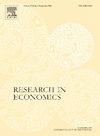重新思考烟草政策:为什么限额和征税计划可以胜过英国的销售禁令
IF 1.3
Q3 ECONOMICS
引用次数: 0
摘要
英国的目标是到2030年实现无烟,为了实现这一目标,英国提出了一项代际销售禁令(GSB)。GSB虽然有些创新,但专门针对后代,可能忽视了当前吸烟者的直接健康负担和非法市场风险。这项研究认为限额和征税计划是一个更全面和有效的替代方案。通过直接解决供应、消费和州税收问题,“限量和征税”方法对吸烟流行率(包括现有吸烟者)产生了更广泛的影响,同时可能减轻销售禁令带来的意想不到的后果,如助长非法贸易和减少税收。这一分析表明,限额和征税机制值得考虑作为一种政策工具,它可以在实现显著和立即减少吸烟相关危害方面优于GSB,而不会产生GSB可能产生的意外后果。本文章由计算机程序翻译,如有差异,请以英文原文为准。
Rethinking tobacco policy: Why a Cap-and-Levy scheme can outperform the UK’s sales ban
The United Kingdom aims to be smoke-free by 2030, and in pursuit of this goal, has proposed a Generational Sales Ban (GSB). While somewhat innovative, the GSB exclusively targets future generations, potentially overlooking the immediate health burdens and illicit market risks associated with current smokers. This study argues for a Cap-and-Levy scheme as a more comprehensive and efficient alternative. By directly addressing supply, consumption, and state tax revenues, a Cap-and-Levy approach offers a broader impact on smoking prevalence including existing smokers, while potentially mitigating the unintended consequences of a sales ban, such as fuelling the illicit trade and reducing tax revenues. This analysis suggests that a Cap-and-Levy mechanism warrants consideration as a policy instrument that could outperform the GSB in achieving significant and immediate reductions in smoking-related harm, without the unintended consequences that the GSB would produce.
求助全文
通过发布文献求助,成功后即可免费获取论文全文。
去求助
来源期刊

Research in Economics
ECONOMICS-
CiteScore
1.40
自引率
0.00%
发文量
37
审稿时长
89 days
期刊介绍:
Established in 1947, Research in Economics is one of the oldest general-interest economics journals in the world and the main one among those based in Italy. The purpose of the journal is to select original theoretical and empirical articles that will have high impact on the debate in the social sciences; since 1947, it has published important research contributions on a wide range of topics. A summary of our editorial policy is this: the editors make a preliminary assessment of whether the results of a paper, if correct, are worth publishing. If so one of the associate editors reviews the paper: from the reviewer we expect to learn if the paper is understandable and coherent and - within reasonable bounds - the results are correct. We believe that long lags in publication and multiple demands for revision simply slow scientific progress. Our goal is to provide you a definitive answer within one month of submission. We give the editors one week to judge the overall contribution and if acceptable send your paper to an associate editor. We expect the associate editor to provide a more detailed evaluation within three weeks so that the editors can make a final decision before the month expires. In the (rare) case of a revision we allow four months and in the case of conditional acceptance we allow two months to submit the final version. In both cases we expect a cover letter explaining how you met the requirements. For conditional acceptance the editors will verify that the requirements were met. In the case of revision the original associate editor will do so. If the revision cannot be at least conditionally accepted it is rejected: there is no second revision.
 求助内容:
求助内容: 应助结果提醒方式:
应助结果提醒方式:


